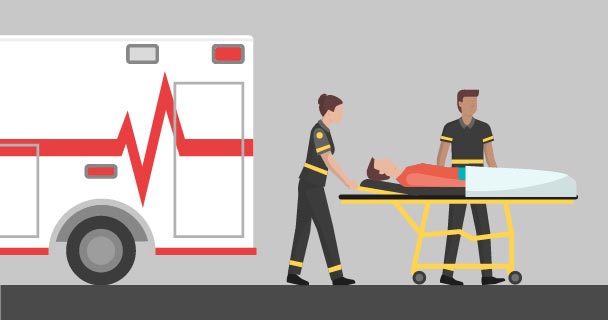blog


This blog post is based on a recent Webinar with James Paturas, Director of the Yale New Haven Health System Center for Emergency Preparedness and Disaster Response (YNHHS-CEPDR).
Every organization participating in Medicare and Medicaid Programs should already have an Emergency Preparedness Plan in place and be awaiting a CMS site visit. CMS’s Final Emergency Preparedness Rule was published on September 16, 2016 and participating Medicare and Medicaid providers and suppliers had until November 15, 2017 to ensure that their plans were compliant with the new regulations.
Explaining the final rule, James Paturas breaks down the four required core elements that must be included in every organization’s plan and be reviewed and updated annually.
Risk Assessment and Planning
When developing an emergency plan, organizations must complete an evaluation of the potential risks they could face and create plans to address them. Paturas suggests completing either a vulnerability analysis or a traditional risk assessment that covers as many areas as possible. “The results of the assessments should be incorporated into the plans,” Paturas explains. “The regulators will want to see the results of the risk assessment and what you have done about it.”
The risk assessment results can help organizations identify essential components that can be integrated into the emergency plan, update existing plans, design new training programs, and enhance exercises. Paturas adds, “Assessments should focus on capabilities and capacities—these will be slightly different for each organization and need to be specific to either an emergency disaster or something that could affect the facility.”
Paturas adds that federal agencies are looking for partnerships to be clearly included in the plans. “So often writing plans is done in isolation. I believe what CMS and the Joint Commission are looking for is that organizations are working in collaboration with their partners.”
Policies and Procedures
“In healthcare organizations we live and die by our policies and procedures,” Paturas says. “The key here is that these must be very specific to the emergency preparedness initiatives.”
Paturas adds that new policies and procedures need to go hand-in-hand with the plans and should be based off of the risk assessments results. CMS requires that the policies and procedures address subsistence needs, evacuation plans, procedures for sheltering in place, and tracking patients and staff during an emergency.
Communication Plan
“Communication continues to be one of the biggest issues that impacts how well we respond to real events,” Paturas says. CMS requires organizations to develop a communication plan that complies with federal and state laws as a part of their emergency plan. It must include contact information for staff, other hospitals, volunteers, and state and local officials, primary and alternative means of communicating with staff and other agencies, and a method to share patient information.
When asked if an organization needs its own plan or if it can be part of an existing emergency operations plan, Paturas responds, “We are taking the approach that it can be embedded within an existing plan as long as you can highlight, if a regulator were to ask, where all of the required elements of communication exist.”
Paturas adds, “In terms of crisis communications, look at the critical issues going on—resource needs and allocation needs versus risk communications. Are there things you need to be telling staff, patients, visitors, or partners that could minimize or mitigate their risk?”
Training and Testing
Paturas observes that most organizations are concerned with how training, testing, and exercises are carried out. He adds, “Testing and conducting exercises is a critical part of training. Those organizations that have participated in or facilitated an exercise know that it is not an easy task. I strongly suggest reaching out to your hospital partners to see if there are exercises that are currently being planned at a local or state level that you could be a part of.”
CMS requires two testing exercises annually. Paturas explains that CMS will allow a tabletop exercise to be accepted as one required exercise, while the second needs to be a community-based, full-scale exercise. Paturas says, “Work with your local community to identify two or three overarching issues based on the risk assessment results. Select one to be completed as a tabletop exercise and another as a full-scale exercise. CMS has left this requirement fairly open, which gives participants some flexibility.”
HealthStream’s learning management system and healthcare training solutions support medical training initiatives and allow for the best patient care.
View All Learning & PerformanceExpand the decision-making skills and effectiveness of your healthcare workforce with HealthStream's workforce development programs and services.
View All Clinical DevelopmentHealthStream credentialing solutions bring automation, consistency, and insight to every step of the provider lifecycle—supporting clinical excellence and operational efficiency.
View All CredentialingHealthStream’s scheduling solutions help organizations—from acute to non-acute systems, large and small—optimize staffing, reduce burnout, and support staff with scheduling tools that adapt to their needs.
View All SchedulingWhen you enact HealthStream's quality compliance solutions, you can do so with the confidence your healthcare organization will meet all standards of care.
View All Quality & ComplianceTransform end-to-end revenue cycle management with comprehensive education
View All Revenue Cycle EducationLearn about our advanced resuscitation training solutions. Our solutions are designed to help improve patient outcomes.
View All Resuscitation